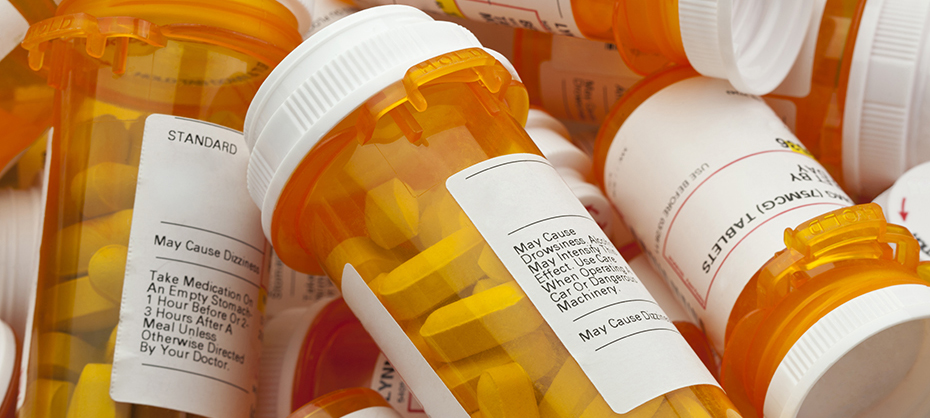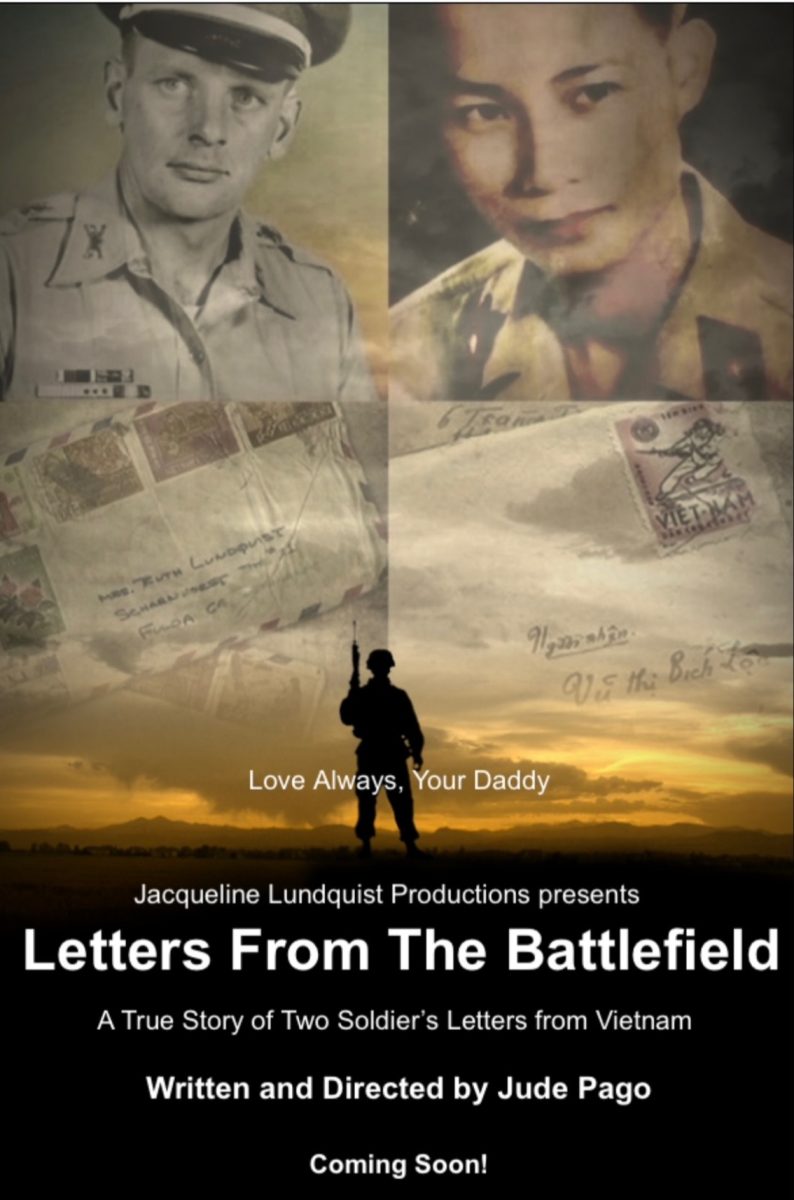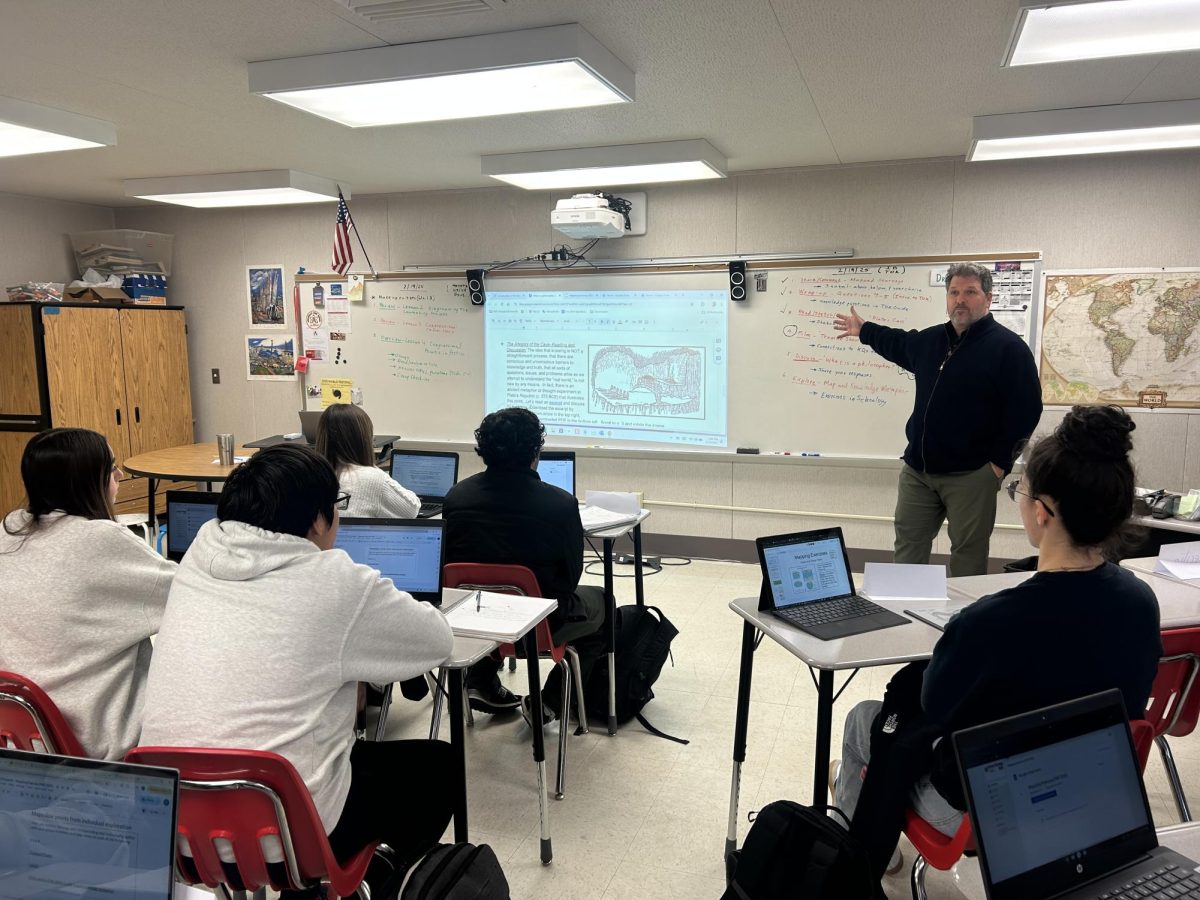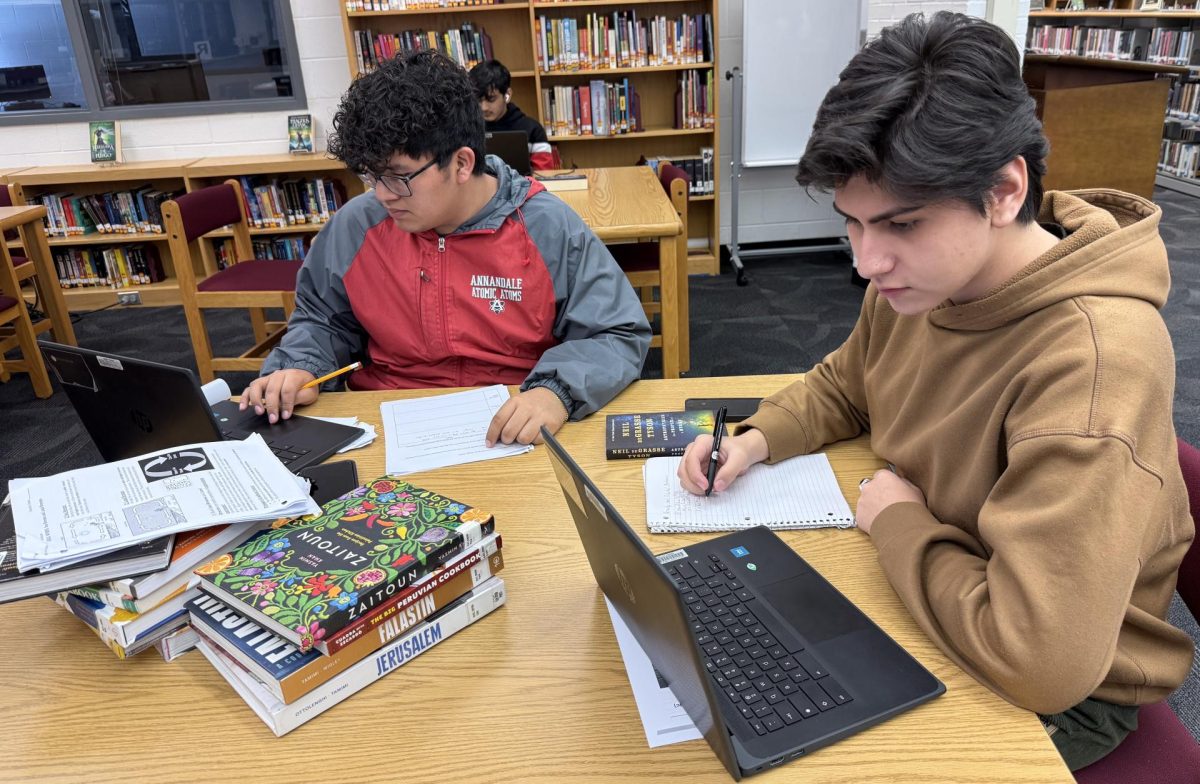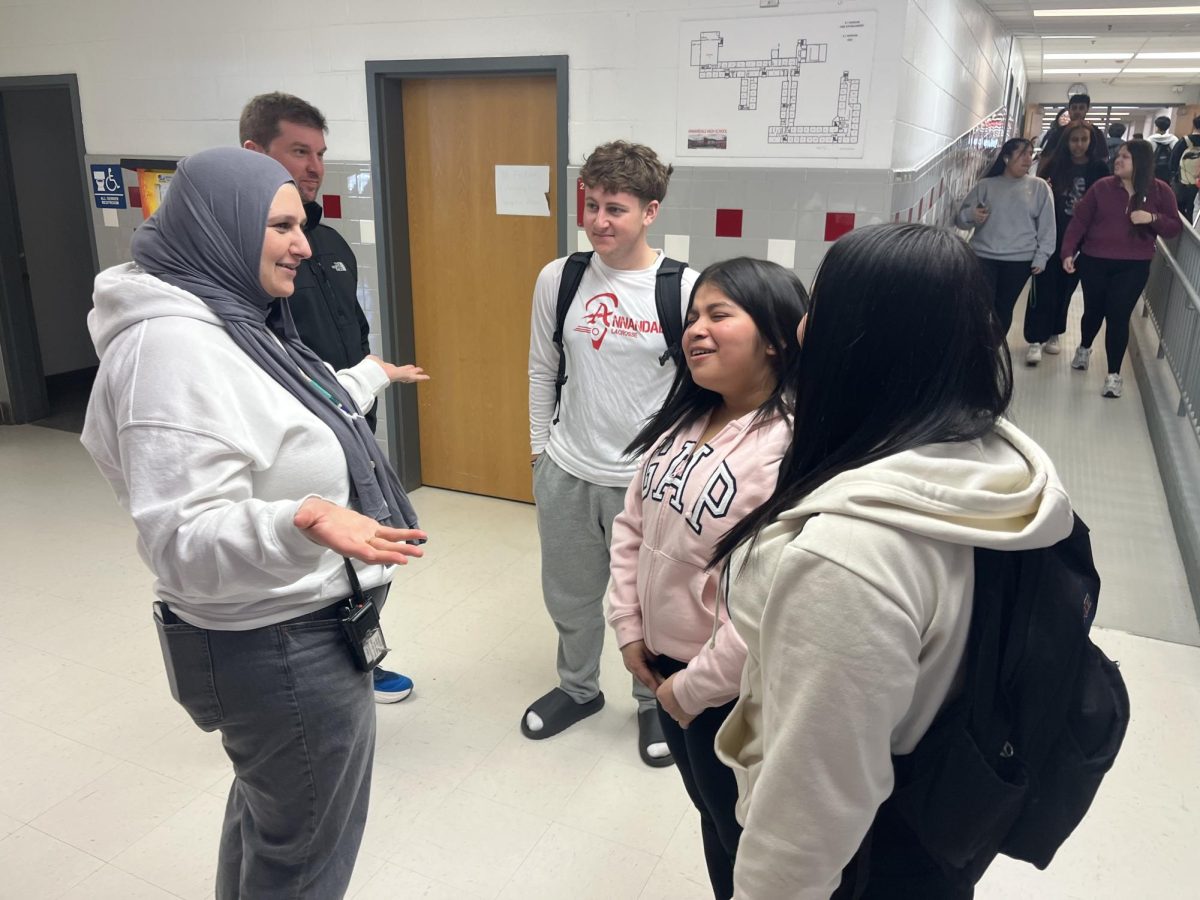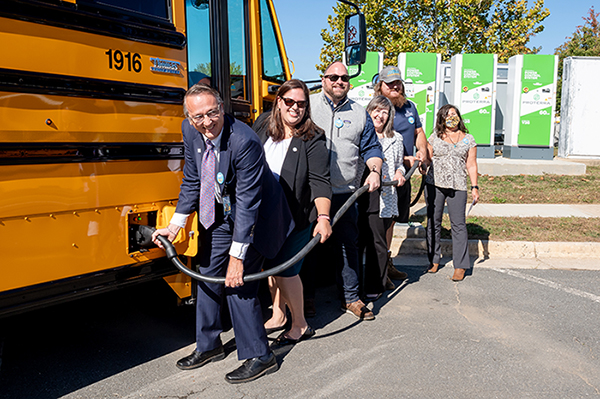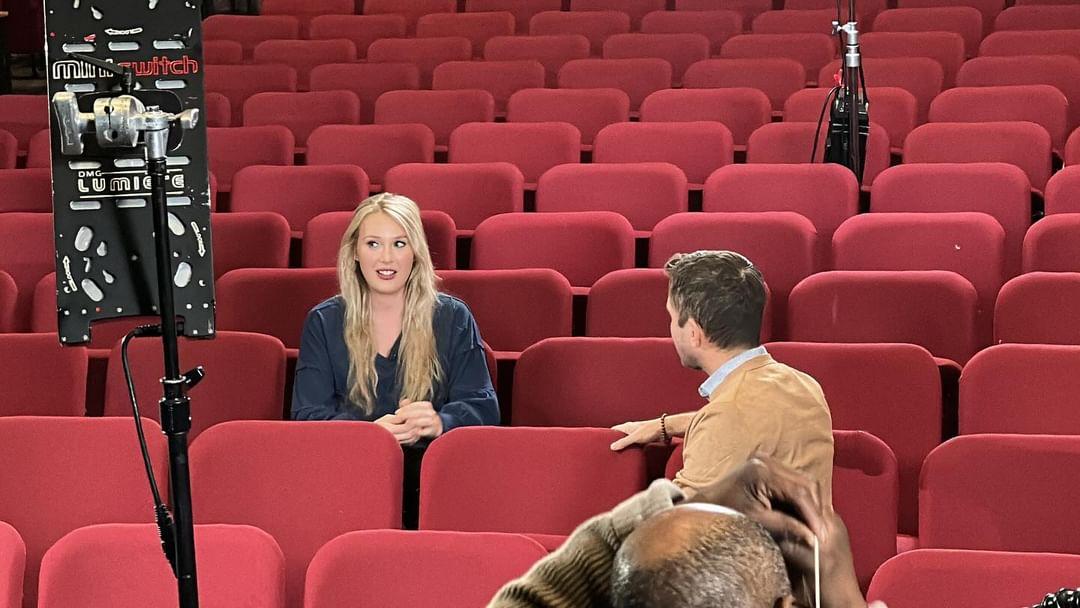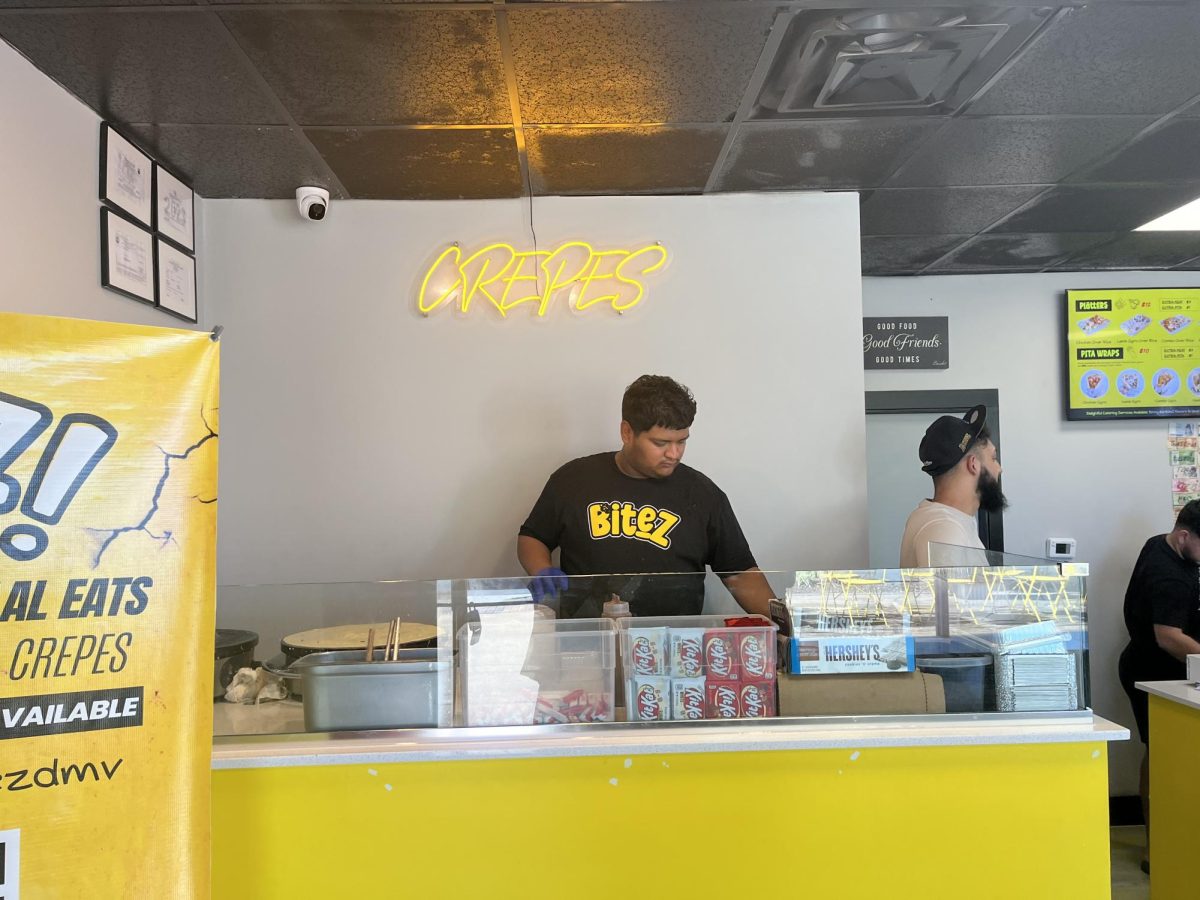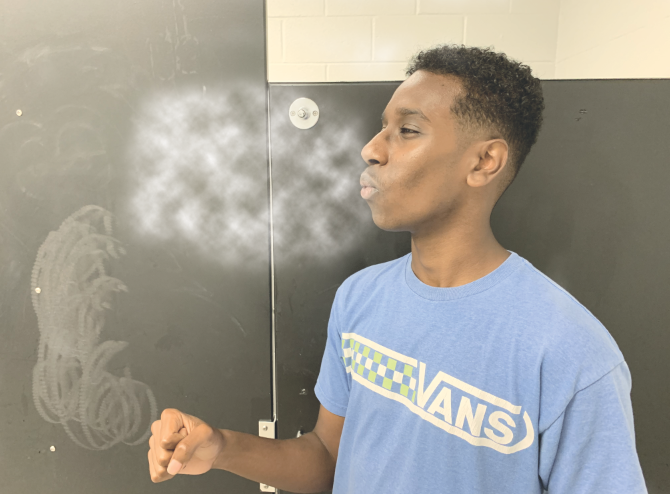The amount it takes to kill most people can fit in this letter O. Youcan’t see it, smell it, taste it. Fentan-yl, the extremely potent opioid typical-ly prescribed for advanced-stage cancerpain, is trickling down to high schools-
including AHS.
Prescription painkillers, such as Percocet, Vicodin, and methadone, arepart of a nationwide opioid epidemic. Fentanyl, however, 50 times stronger than heroin and 100 times stronger than morphine, has emerged as the pre-
dominant source of overdose.
Charlisa Becklund is the substance abuse prevention specialist at AHS and is tasked daily with helping students
caught, admitted, or referred to her. “What I see is middle school kids start with nic[otine]. They might get addicted to nic because it’s easy to get addicted to and then by the time they get here, and they’re in ninth grade, tenth grade, it’s carts,” Becklund said. “And then if they like that, and stick with that, and they’re addicted to that, then at the end of their high school career or beyond, they move to something stronger, which would be pills or heroin. A lot of times people think they’re buying a bag of heroin. And it’s got fentanyl in it.”
Fentanyl’s easy and cheap manufacture only compounds the problems that arise from its strength. Illegally
manufactured fentanyl is being pressed into counterfeit pills (made to resemble Adderall, OxyContin, and others) and counterfeit THC cartridges and nicotine vapes to unknowingly hook users on a more powerful, addictive product and also cut costs.
When AHS School Resource Officer H. Isabella was in high school, she said the worst things around were weed,
molly, and club drugs. But today is a whole different level. “You know, new narcotics coming in from God knows where,” Isabella said.
The increase in opioid overdose deaths is typically split into three waves. Wave one, which started in the 1990s, was characterized by deaths from natural and semi-synthetic prescription opioids. Wave two, which began in 2010, was marked by heroin overdose deaths. And the current wave three, which started in 2013, is distinguished by the skyrocket in prescribed or illegally manufactured synthetic opioid deaths.
According to the CDC, from 1999 to 2021, nearly 645,000 people have died from an opioid overdose. The num-
ber of opioid overdose deaths per year has been steadily rising: in 2010 it was around 21,089, in 2017 it was 47,600,
and in 2021 it was 80,411.
“You don’t think about what it is going to do to your family. You know, what is it going to do to you? What are the health effects of it,” Isabella said. “You know, every time you do it, that’s kind of a hefty Russian Roulette that you’re playing, because you don’t know the source, you haven’t tested it, you know none of it. And it’s like, ‘Oh, I trust this person.’”
There have been several instances of overdose at AHS. Most recently, there was an overdose in Oct. 2023 in a bath-
room during W6. There were instances of fentanyl overdose by AHS students last summer and last school year. A former AHS student fatally overdosed in Jan. 2023. At Justice HS, there was a fatal overdose in Dec. 2023. It is difficult to know exact numbers about overdose and use due to the nature of fentanyl.
Schools, like AHS, now carry naloxone, which can be used to reverse an opioid overdose. Still, experts are weary
that it can keep up with the constant release of increasingly strong synthetic opioids.
“Your dealers don’t care, they don’t care about you, they don’t care if you have that long term issue,” Isabel-
la said. “You’re numbers in their bank account and nothing more.”
Becklund suggested that those who seek help can go to private therapists, Manassas Addiction Clinic, or the Com-
munity Services Board– which she said many kids have successfully gone through. She also mentioned Alcoholics
Anonymous and Narcotics Anonymous, both free to attend and listen to similar struggles. AHS also regularly hosts the Hidden in Plain Sight program, where parents can learn about the warning signs of drug use.
Addiction is already extremely difficult, and as a teen, having to admit to an adult is intimidating. Being exposed
to other users or your dealer daily at school makes the first step- willingness to accept help- especially hard.
“I get that there’s a fear component to it, I get it, I understand it, I really, truly do,” Isabella said. “But you should almost be enraged that this person has zero regard for you and your health, and they don’t care. You know, that’s
how I feel. That’s what kills me.”



